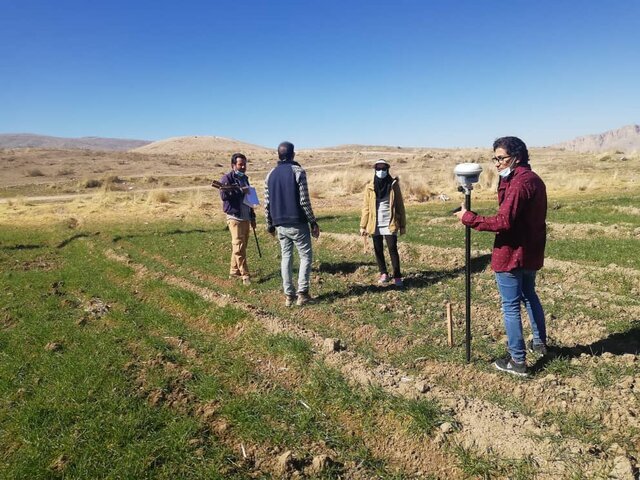Archaeologists probe Tol-e Qaleh near Persepolis

TEHRAN – A team of archaeologists and cultural heritage experts have commenced a new round of investigation into Tol-e Qaleh, a prehistoric site situated adjacent to the UNESCO-registered Persepolis in southern Iran.
With an area of six hectares, Tol-e Qaleh is one of the most significant [archaeological] sites, which is situated near Persepolis and Naqsh-e Rostam in the Marvdasht region of Fars province, the director of the World Heritage site announced on Monday.
Tol-e Qaleh bears a sequence of [consecutive] historical eras; from the 5th and 4th millennium BC to the Islamic epoch. And the present study is expected to provide a complete model of the plain chronology, Hamid Fadaei explained.
The historical complex of Persepolis is encircled by several ancient sites such as Tol-e Bakun, Tol-e Mushaki, Tol-e Jari and Tol Qaleh, Hamid Fadaei in a plain, which became a cradle of civilization several thousand years ago, the official added.
The project also aims at documenting, identifying the physical and structural features of the site, and reviewing its different historical eras as well as its cultural distribution and density, the head of the archaeological survey Fazlollah Habibi said.
The historical site was first identified by Belgian archaeologist Louis Vandenberg in the 1970s and was studied and excavated for a short time, he added.
He also noted that in this new round of the archeological project satellite and aerial images, multi-frequency GPS devices, geographic information system (GIS) and statistical analysis will be used.
Back in December, Fadai announced that the entire Marvdasht plain, which was once the seat of power of the Achaemenid Persian Empire (c. 550 – 330 BC), is scheduled to undergo an archeological investigation.
The archeological surveys and excavations, which have been previously commenced across the Persepolis, is scheduled to be extended to the entire Marvdasht plain in a purposeful and methodical approach by the researchers who have conducted related researches, he explained.
Conducting such archaeological surveys in historical sites and hills could lead to important historical results and information at a low cost and without the need for extensive excavations, which is necessary for recognizing the cultural sequence of Marvdasht plain, he added.
Persepolis, also known as Takht-e Jamshid, whose magnificent ruins rest at the foot of Kuh-e Rahmat (Mountain of Mercy), was the ceremonial capital of the Achaemenid Empire. It is situated 60 kilometers northeast of the city of Shiraz in Fars province.
The ancient region, known as Pars (Fars), or Persis, was the heart of the Achaemenid Empire founded by Cyrus the Great and had its capital at Pasargadae. Darius I the Great moved the capital to nearby Persepolis in the late 6th or early 5th century BC. Alexander the Great defeated the Achaemenian army at Arbela in 331 and burned Persepolis apparently as revenge to the Persians because it seems the Persian King Xerxes had burnt the Greek City of Athens around 150 years earlier.
Persis became part of the Seleucid kingdom in 312 after Alexander’s death. The Parthian empire (247 BC– 224 CE) of the Arsacids (corresponding roughly to the modern Khorasan in Iran) replaced the Seleucids' rule in Persis during 170–138 BC. The Sasanid Empire (224 CE–651) had its capital at Istkhr. Not until the 18th century, under the Zand dynasty (1750–79) of southern Iran, did Fars again became the heart of an empire, with its capital at Shiraz.
ABU/AFM
Leave a Comment